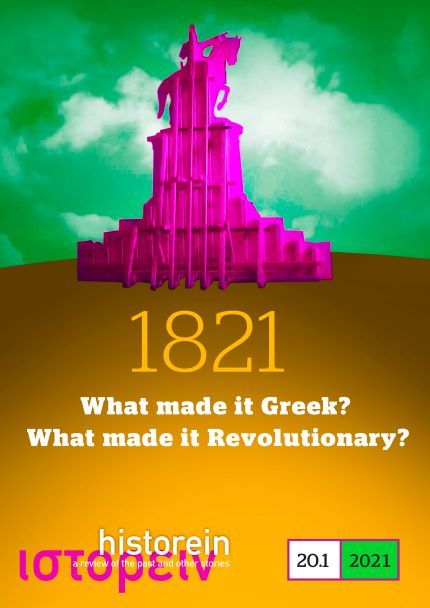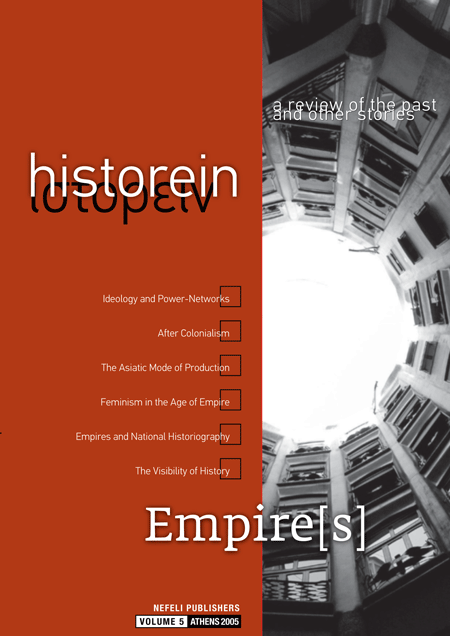Where was 1821? Space and Territory in the Greek Revolution

Abstract
The aim of this special issue of Historein is to offer a new and fresh perspective on the 1821 Greek Revolution by drawing on the insights that the spatial turn has brought to the study of the Age of Revolutions. Our point of departure was that although the revolution took place in time and space, it is questions of temporality and of situating the revolution in a temporal context that have mainly preoccupied historians. This can hardly be said about space. In fact, as we argue, the spatial categories that historians have used have had a “natural” and self-evident character that required little or no probing. We wanted to interrogate this character, and what we consider as a lacuna in our understanding of the revolution. Thus, the aim of the introduction is threefold. The first part briefly discusses the historiography on space, and the ways in which this has been used in the study of Age of Revolutions. It also explains why the revolution provides a rich setting to think through space and pose questions about spatiality. The second part introduces the articles that comprise the issue. In this part, we also attempt to bring the contributions together by showing that they can be seen as falling into three very broad categories depending on the type of space they feature (space as place, space as territory, and space as an imagined category). The last part considers other possibilities, other vistas of research, where a “spatial” perspective can take us, if we want to better understand the 1821 Revolution.
Article Details
- How to Cite
-
Sotiropoulos, M., Hadjikyriacou, A., & Dialla, A. (2023). Where was 1821? Space and Territory in the Greek Revolution. Historein, 21(1). https://doi.org/10.12681/historein.35712
- Section
- INTRODUCTION

This work is licensed under a Creative Commons Attribution-NonCommercial-ShareAlike 4.0 International License.
The copyright for articles in this journal is retained by the author(s), with first publication rights granted to the journal. By virtue of their appearance in this open access journal, articles are free to use (with the exception of the non-granted right to make derivative works) with proper attribution for non-commercial uses (licence Creative Commons 4.0). EKT/NHRF retains the worldwide right to reproduce, display, distribute, and use articles published in Historein in all formats and media, either separately or as part of collective works for the full term of copyright. This includes but is not limited to the right to publish articles in an issue of the Journal, copy and distribute individual reprints of the articles, authorize reproduction of articles in their entirety in another EKT/NHRF publication, and authorize reproduction and distribution of articles or abstracts thereof by means of computerized retrieval systems.



